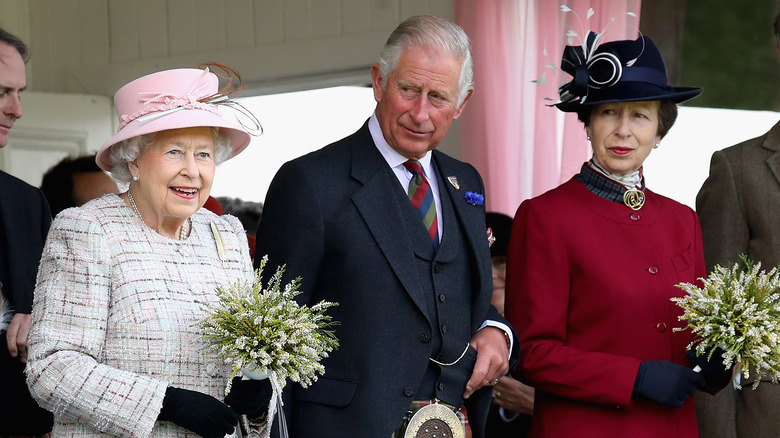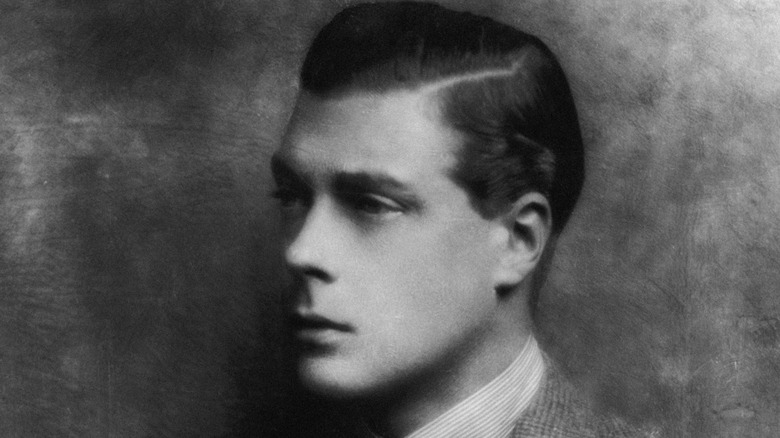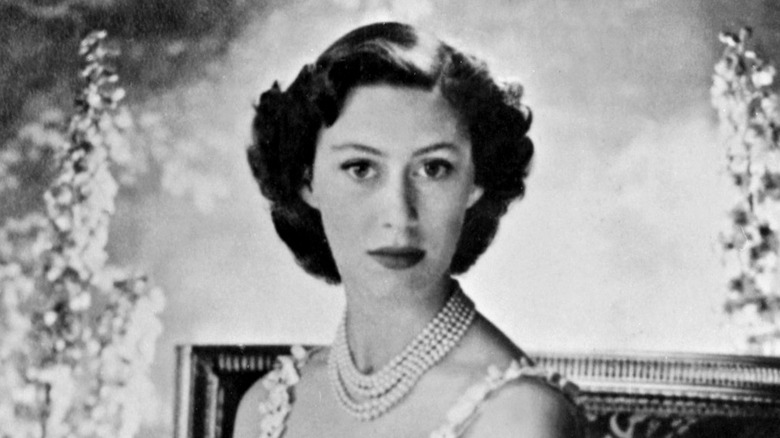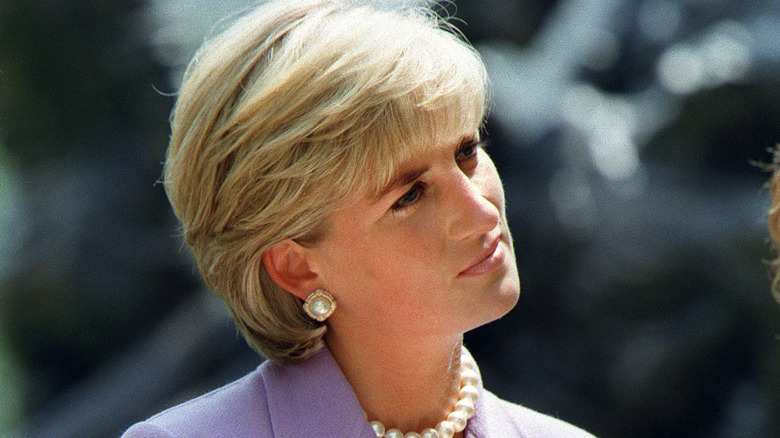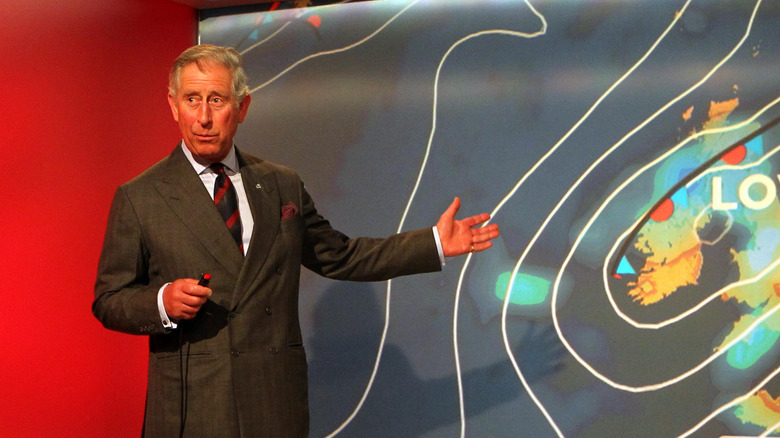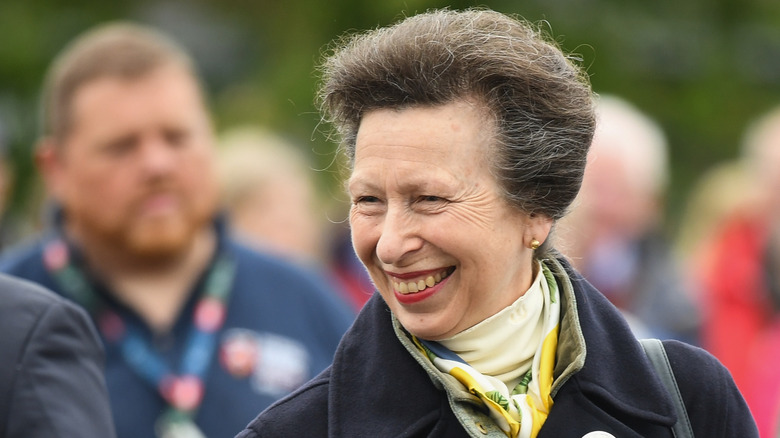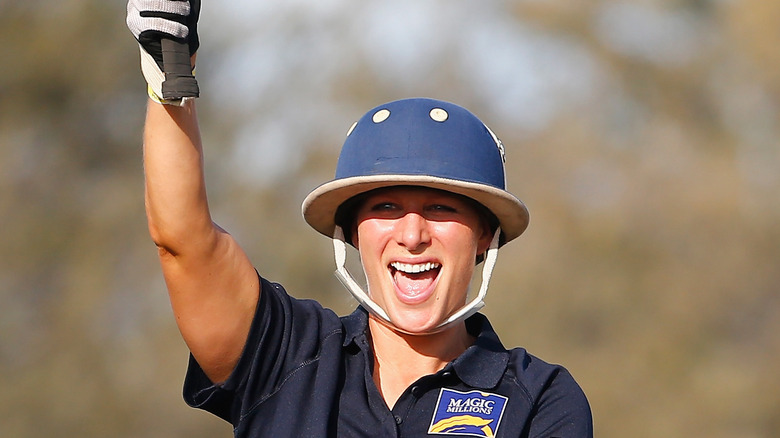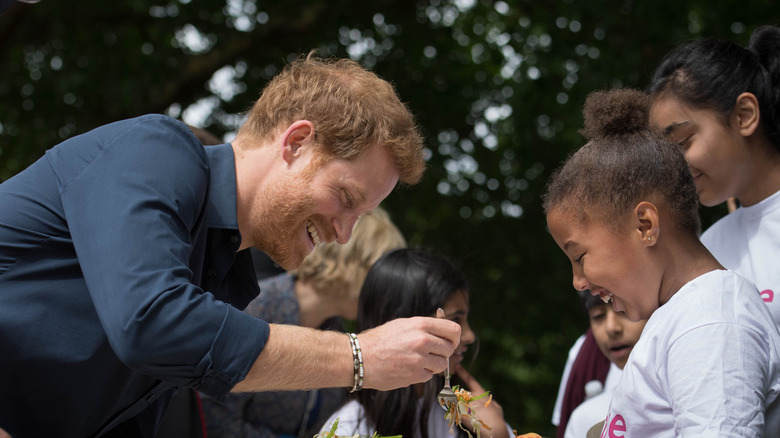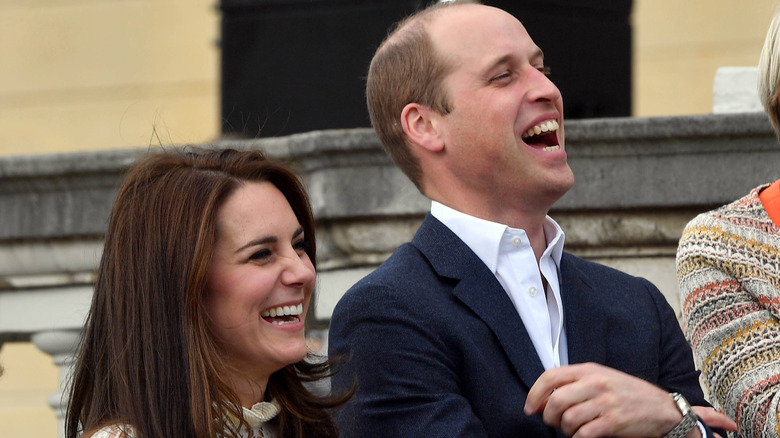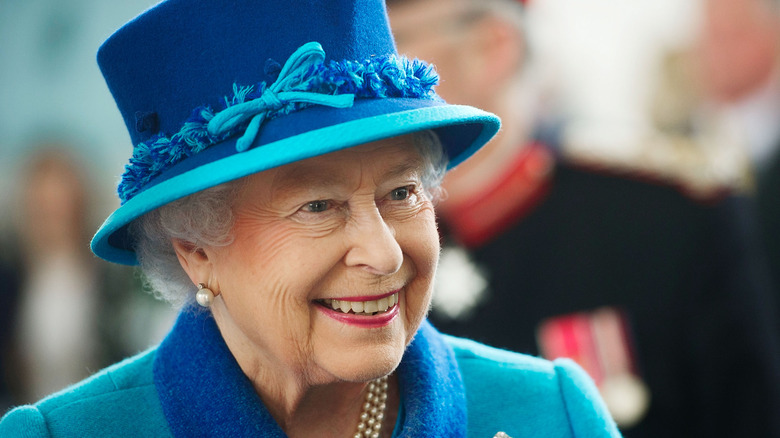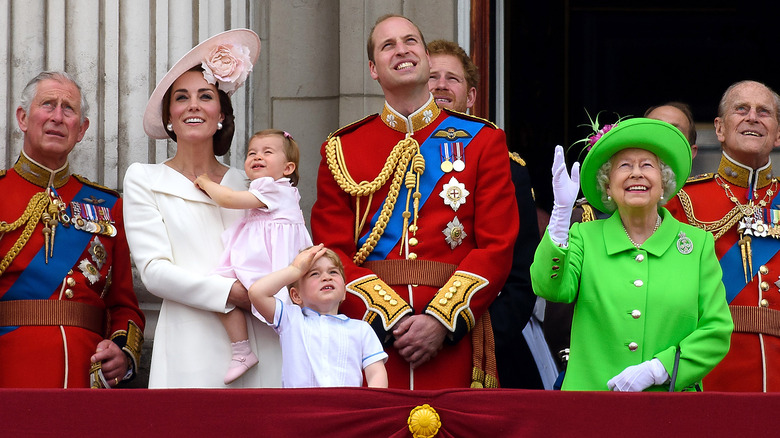Royals Who Were Anything But Traditional
We may receive a commission on purchases made from links.
Here in the U.S., there is an intense fascination with the British royal family — but there's plenty of criticism as well. One of the most persistent criticisms of the royal family in recent years is their reticence to change, and their staunch adherence to tradition. The New York Times notes that even in the days after Princess Diana's death in 1997, "...the palace — preoccupied by protocol, precedent and duty — maintained a frozen silence...For a handful of deluded days after her death, they clung obstinately to their principles of remoteness and privacy behind the gates of their Scottish castle, while popular anger grew."
Despite this long-standing reluctance to embrace change and modernity, there have been royal rebels in every recent generation. In earlier years, those acts of rebellion came with an immense negative impact that rippled through the royal family for decades. And, as it turns out, many members of the royal family have had some less-than-traditional inclinations buried beneath the layers of royal protocol and duty.
Edward VIII
Edward VIII — born in 1894 and christened Edward Albert Christian George Andrew Patrick David of the House of Saxe-Coburg-Gotha (which was later changed to Windsor) — was already seen as an unconventional heir to the throne when he was a young man. "The Prince's genuine friendliness, which allowed him to mingle with people, combined with a somewhat shy, almost wistful manner, convinced those who saw him that he would be a popular monarch," wrote The New York Times in Windsor's 1972 obituary. He became king after the death of his father, King George V, in January 1936, but only spent 11 months in the role before abdicating the throne so he could marry Wallis Simpson, a twice-divorced American socialite who had become infertile following complications from an abortion, according to Wallis: Secret Lives of the Duchess of Windsor, by Charles Higham.
Due to royal rules surrounding marriage, Windsor was not allowed to marry a divorcée: "the King, as the head of the Church of England, would be violating the church's doctrines against divorce," noted to The New York Times. Instead, he decided to abdicate, saying in a nationally-broadcast radio address that "...you must believe me when I tell you that I have found it impossible to carry the heavy burden of responsibility and to discharge my duties as King, as I would wish to do, without the help and support of the woman I love." It was a bombshell that rattled the royal family for decades.
Princess Margaret
Princess Margaret, Queen Elizabeth's younger sister, also ran into trouble surrounding the royal marriage rules. Margaret fell in love with Peter Townsend, a war hero who worked in the palace. Townsend was, however, a commoner — and a divorcé. "Their mutual fondness became public at the coronation of Queen Elizabeth in 1953, when photographs showed...[Townsend] and the Princess beaming at each other and laughing," wrote The New York Times. The romance "captured the public's imagination," but because Margaret was third in line for the throne, she was forbidden from marrying a divorcé.
"Queen Elizabeth was required to give permission for the marriage under the Royal Marriages Act of 1772," according to the BBC magazine, "and under pressure from the government and the Church of England...she refused. Instead Margaret and Townsend were told to wait two years until she was 25 and able, under the Act, to choose for herself."
When the two years were up, the two still wished to marry, but Elizabeth again denied them permission. While history is divided over what happened next — according to popular legend, Elizabeth was resolute, but the BBC reported that documents in the British National Archives indicate that Elizabeth was working with Parliament to amend the Act — Margaret and Townsend announced, in 1955, that they had ended their relationship. Margaret and Townsend both eventually married other people, but Margaret, according to The New York Times, "is believed to have always considered...Townsend to be the great love of her life."
Princess Diana
For many reasons, Princess Diana was a royal maverick: her capacity for empathy and warmth, her hands-on parenting approach, and her determination to shed light on taboo subjects set her apart from other members of the royal family. According to The New Yorker, her difficult childhood "left Diana with an ability to see and to empathize with pain...[t]he Windsors are stiff and awkward, and are quick to pull rank. Diana was none of these things."
Whereas many royals kept their distance from taboo issues such as AIDS and mental health, Diana openly discussed her challenges, and she "shattered protocol when she gave an unsanctioned interview to the BBC and opened up about her marriage, depression, and struggle with bulimia," notes Vogue.
She also worked on AIDS issues in the 1980s — which, given the panic about the AIDS epidemic at the time, was no small achievement. She became the patron of the UK's National AIDS Trust, and in 1987, she helped open the UK's first HIV/AIDS unit, which cared exclusively for infected patients, at the London Middlesex Hospital. Even more notably, she was in direct contact with a patient in the AIDS unit at a time when the panic surrounding the virus was intense. "In front of the world's media, Princess Diana shook the hand of a man suffering with the illness. She did so without gloves, publicly challenging the notion that HIV/Aids was passed from person to person by touch," notes the BBC.
Prince Charles
Charles reportedly loves being outdoors in the countryside, which is just the slightest bit incongruent with the luxury of life as a monarch. "Paradoxes dot the life of a man who moves in rarified circles but is most at ease in the countryside, where he spends hours weeding and tending to hedges. If he hadn't been born into the royal family, 'he would have been a farmer,'" the author of a recent Prince Charles biography, Sally Bedell Smith, told the Wall Street Journal.
Charles has also broken tradition by being outspoken on matters of public policy, especially those surrounding environmental conservation, sustainability, and climate change. "It is baffling, I must say, that in our modern world we have such blind trust in science and technology that we all accept what science tells us about everything — until, that is, it comes to climate science," he said during the inaugural awards ceremony for the Prince of Wales Young Sustainability Entrepreneur Prize.
Recently the Queen has passed more duties and activities to Charles, and while he is "unlikely to step aside in favor of Prince William, his reign would depart in some respects from his mother's," notes the Wall Street Journal. "'He speaks differently, he's more comfortable speaking off the cuff and he's more inclined to show his emotions obviously publicly than the Queen is,' [Smith] says. He also is willing to reveal an informal streak and 'wear silly hats that the Queen would never have worn, or virtual-reality glasses.'"
Anne, Princess Royal
Anne, who bears the title Princess Royal, is Queen Elizabeth's only daughter — and she's a no-nonsense, non-traditional woman. She reportedly loves the outdoors, and she's such an accomplished equestrienne that she competed in the 1976 Olympics as a member of the U.K.'s equestrian team, according to the Royal Family's official website. She competed in both the individual and team events, according to CBS News, and although she didn't win a medal — she placed 24th overall, while Britain came in ninth — she was nonetheless the first member of the royal family to compete in the Olympics. She also competed despite having a concussion. According to The Montreal Gazette, during the second day of a three-day event, and "in front of a crowd that included her parents, she fell and suffered a concussion...[s]he got back on her horse and completed the course, later telling an interviewer that she doesn't remember much of what happened that day."
She's also not one for high-maintenance fashion. Glamour reported that she apparently recycled a 30-year-old outfit when she attended Ascot in 2015. Wearing the same mustard-yellow frock that she'd worn to the Trooping of the Colour in 1980, Anne proved that one can be both a princess and thrifty.
In another non-traditional move, Anne ensured that her two children with ex-husband Mark Phillips, Zara and Peter, don't have royal titles. According to People magazine, "[t]his was a deliberate choice made by Anne and...Mark Phillips. Though the Queen offered Mark an earldom, per royal tradition, when he and Anne married in 1973, he turned it down. That meant that Zara and Peter didn't get titles, either," which is something that Zara told The Times (via People) that they're both grateful for.
Zara Tindall
Described by the UK's Country Life magazine as "kindly, empathetic and irreverent," Zara (Phillips) Tindall — daughter of Anne, Princess Royal — is also an accomplished equestrienne. Following in her mother's footsteps, she competed for Team GB in the 2012 London Olympics and won a silver medal with the eventing team, according to CNN. Her July 2011 wedding to former England rugby captain Mike Tindall was the "other royal wedding" that year, and CBS News notes that it was "a low-key affair, with only a hint of the glamour and excitement of Prince William's show-stopping nuptials in April."
In another break with tradition, she kept her maiden name — which, according to the BBC, set a royal precedent. "Even when they marry commoners, Royal brides have always adopted the family name of their partners," the BBC noted, saying that her decision appeared to be "based on the fact she wants to preserve her sporting persona and business interests. The former equestrian world champion is known throughout the sport as Zara Phillips and she has signed a number of deals which help fund her sporting [career]." She continued to use her maiden name until 2016, according to The Times, when she took her husband's surname and became Zara Tindall.
Prince Harry
My first memory of Prince Harry is from Diana's funeral — watching this tiny boy walking behind his mother's coffin was heart wrenching. Understandably, Harry was traumatized by the whole experience. In an interview as part of a Newsweek feature article on Prince Harry, he spoke out about the experience: "I don't think any child should be asked to do that, under any circumstances. I don't think it would happen today."
While the royal family has traditionally stayed mum on mental health issues, Harry has decided to follow in his mother's footsteps by discussing his struggles openly and honestly. Appearing on the first episode of the podcast Mad World, in which high-profile guests discuss their experiences with mental health, Prince Harry revealed that after two years of "total chaos" in his late 20s, he sought counseling to come terms with the death of Princess Diana.
In an interview with The Telegraph, Harry said that he "shut down all his emotions" for almost 20 years after the sudden death of his mother — despite Prince William's efforts to convince him to seek help. "Disclosing that he has spoken to a professional about his mental health, he describes how he only began to address his grief when he was 28 after feeling 'on the verge of punching someone' and facing anxiety during royal engagements," The Telegraph reported. After working with a counselor and taking up boxing, Harry, now 32, told reporters that he's now "in 'a good place.'"
William and Kate
William and Kate have also followed in Diana's footsteps by speaking openly about mental health issues. With Harry, the three royals founded Heads Together, a charity "partnership with inspiring charities with decades of experience in tackling stigma, raising awareness, and providing vital help for people with mental health challenges" that "aims to change the national conversation on mental health and wellbeing."
As part of that effort, they've vowed to change the royals' notorious "stiff upper lip" approach to life. In an interview with CALMzine, the magazine of Campaign Against Living Miserably (CALM), a British mental health organization, William said, "For too long there has been a taboo about talking about some important issues. If you were anxious; it's because you were weak. If you couldn't cope with whatever life threw at you, it's because you were failing. Successful, strong people don't suffer like that, do they? But of course — we all do. It's just that few of us speak about it... There may be a time and a place for the 'Stiff upper lip', but not at the expense of your health."
Adding to that, William and Kate have reportedly worked hard to ensure that they are active, present parents in their children's lives, and that they don't emulate the cold, distant parenting practices of the pre-Diana monarchy. "Catherine and I are clear that we want both George and Charlotte to grow up feeling able to talk about their emotions and feelings," William told CALMzine.
Queen Elizabeth
Even the Queen is starting to break with tradition: just before Prince George was born in July 2013, the Queen worked with Parliament to change the laws of succession. Succession to the Crown Act nullifies the "former rules of male primogeniture, royal sons took precedence over their female siblings, including first-born royal daughters," according to the BBC, and allows heirs to the throne to marry a Catholic without it disqualifying them from becoming king or queen.
The Act also amends the rules governing the Queen's approval of royal marriage requests — and now, as the BBC notes, "only the first six in line to the throne need the Queen's consent to marry...[replacing] a long-standing procedure which affected any distant royal relations who are descendants of George II."
It would appear that, even well into her 90s, the Queen is willing to change with the times!
Rebellious royals and changing times
Each person listed here, from Edward to William, has rebelled or pushed against tradition in their own way. Some of these effects have been negative — Edward's abdication was nothing short of traumatizing for both the monarchy and for England — and others, like William, Harry, and Kate's efforts to bring awareness to mental health, have been resoundingly positive. Nonetheless, the rebellious royals' efforts to bring about a seismic change in royal protocol appear to be working.

